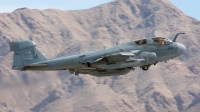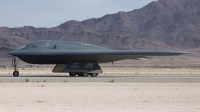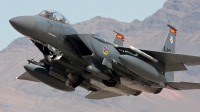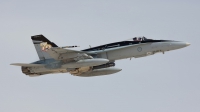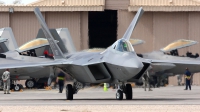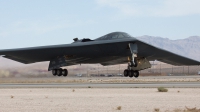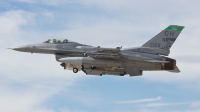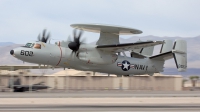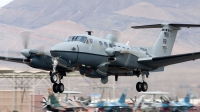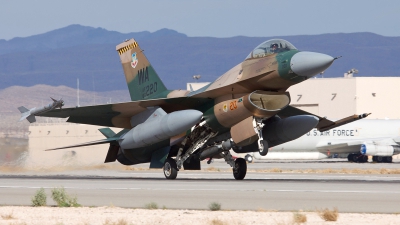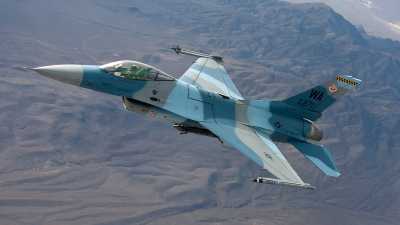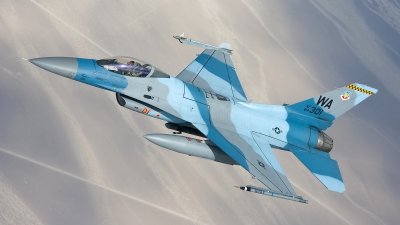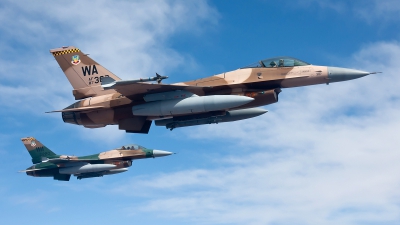
If you ask anyone involved in military aviation what is the most widely known military aviation exercise in the United States, undoubtedly the most common reply would be the United States Air Force’s (USAF) Red Flag exercise. As a testament to its ever-increasing value and popularity with militaries around the world, countless aircrews, maintenance and logistics support personnel descend up to four times a year upon Nellis Air Force Base (AFB) for a two or three week period of intense aerial combat training. Due to the large-scale force employment that usually includes a number of international participants, Red Flag is very popular with aviation photographers from around the globe. The 12-3 edition was no exception, and during two weeks in March it drew many supporters to the massive base located just outside Las Vegas, Nevada.
Initially held in 1975 as a Tactical Air Command directive in response to overwhelming USAF losses during aerial combat over Vietnam, Red Flag provides aircrews with highly realistic combat scenarios within the relative safety of a training environment. The premise behind the exercise is that with several ‘sorties’ completed during Red Flag, the survivability of crews that later see combat increases exponentially. Initially the Red Flag program consisted solely of USAF units, but due to overwhelming success has since expanded to include a wide variety of NATO and other international partners. In the latest exercise held from 27 Feb until 16 March, the United Kingdom’s Royal Air Force (RAF) and the Royal Australian Air Force (RAAF) joined the US forces in what could easily be dubbed a ‘colonial’ flag.

Red Flag 12-3’s blue force featured a wide variety of aircraft and mission platforms, and two aircraft types also made their Red Flag debut during this exercise; both the United States Navy’s E-2D Advanced Hawkeye and the USAF’s MC-12W Liberty. These two turboprop types were supplemented in their Intelligence, Surveillance, Reconnaissance (ISR) roles by numerous aircraft including an EP-3 Aries, E-3C AWACS, E-8C JSTARS, RC-135 Rivet Joint, while the 9th Reconnaissance Wing contributed U-2s and Global Hawks which operated from Beale AFB in California. Despite ISR clearly being a primary mission during this exercise, other important aspects of a strike package were not omitted. These elements included offensive counter air, strike/interdiction, suppression of enemy air defenses, close air support, and combat search and rescue. Providing the counter air role were the F-22 Raptors from the 27th Fighter Squadron (FS) at Langley AFB and the Oregon Air National Guard’s (ANG) F-15C Eagles of the 123rd FS. Along with ISR, strike/interdiction involved a generous amount of players, with F-18 Hornets from both VMFA-122 Werewolves and the RAAF flying alongside RAF Tornado GR4s, F-15E Strike Eagles from the 389th FS out of Mountain Home AFB, and F-16CGs of Ohio ANG’s 112th FS in Toledo. A pair of B-2 Spirit bombers complemented the interdiction package with a heavy and stealthy strike capability. In an effort to allow blue strike aircraft to ingress to the target area, the enemy ground-based air defenses were engaged and suppressed by USMC EA-6B Prowlers from VMAQ-4 and F-16CJ Vipers from Minnesota ANG’s 179th FS. The ‘Bulldogs’ of the 179th FS (148th FW) recently replaced their older block 25 Vipers with newer block 50s at the expense of the 22nd FS at Spangdahlem AB, and some of the Bulldogs jets still retained their original Spangdahlem ‘SP’ tailcode and markings at the time of the 12-3 exercise.

All these units combined to form a blue or offensive air strike package, targeting and fighting against the aerial and ground-based defensive threat, known as the red force. This scenario is played out over a large portion of the Nellis Range Complex, also known as the Nevada Test and Training Range (NTTR). The NTTR is a large 4700 square mile (12200 sq km) section of airspace northwest of Las Vegas, and this expanse allows forces to train and employ their platforms almost uninhibited. The 414th Combat Training Squadron (CTS) is a non-flying unit that has the important task of organizing and controlling the Red Flag exercises. Each mission is well documented via the Nellis Air Combat Training System (NACTS), a complex tracking system that offers a comprehensive debriefing of the battle in the airspace above Nevada. In addition to the wealth of detailed information available for each aircraft at any given time, this system also allows for an extra margin of safety with observers closely monitoring the progress of the exercise.
Aggressors
Two adversary flying squadrons form the backbone of the airborne ‘red’ or defensive hostile force. The 64th and 65th Aggressor Squadrons (AGRS) employ the F-16 Fighting Falcon (Viper) and F-15 Eagle, respectively. These aircraft, painted in various and unique camouflage schemes and flown by dedicated aggressor pilots, are specially trained in adversary tactics and provide an aerial threat to the blue force. On the non-flying side, the 507th Air Defense Aggressor Squadron (ADAS) specializes in the various integrated air defense systems located on the ground throughout the NTTR, and it applies these threats to provide the most effective training scenarios for the blue forces. These units are part of the 57th Adversary Tactics Group (ATG), which falls under the command of the 57th Wing at Nellis.
In 2005, the 57th ATG was created in an effort to align all aggressor (flying, intelligence, and tactics support) squadrons under a single command. The 57th ATG falls under the command of the 57th Wing also headquartered at Nellis, and now oversees all aggressor operations. This allows the ATG to present a realistic, sophisticated, and integrated threat during Red Flag exercises at Nellis. In addition to Red Flag, the 57th ATG can be tasked with mission support for the USAF’s Weapons School, and has undertaken numerous road shows to train individual squadrons at the local level. In fact, just prior to Red Flag 12-3, the 64th Aggressor Squadron supported the Operational Readiness Inspection at the Air Force Reserve Command’s (AFRC) 301st Fighter Wing in Fort Worth, Texas.
The nature of aerial combat is that the threats posed to air forces are constantly evolving, and the Red Flag exercises provide an outlet for the 57th ATG to replicate the latest in adversarial technology and tactics to a growing list of US units and international allies and partners. These coalition-building exercises serve as valuable training aids and increase both the capability and survivability of our forces that see combat in the future.

The author would like to thank LT Balch, LT Lustig, and the rest of the Nellis AFB Media Team for the opportunity to cover this exercise. The next edition of Red Flag is 12-4, scheduled for July 16-27, 2012.


